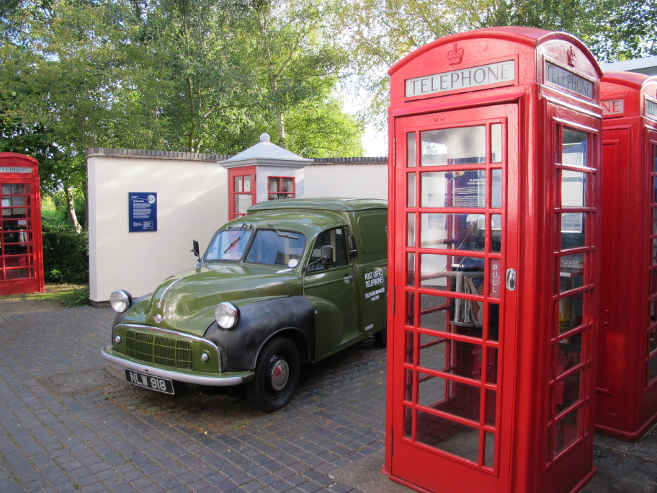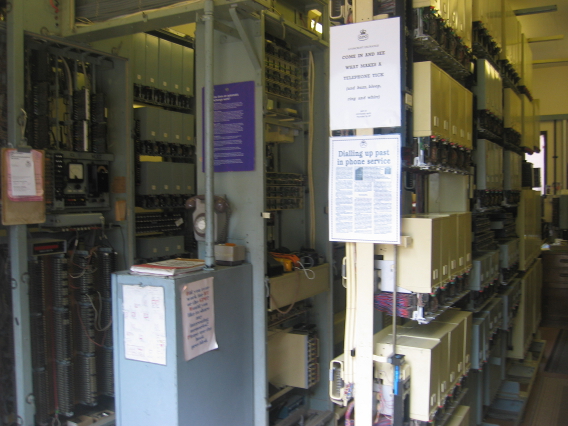 |
|
|
|
|
|
|
|
|
|
|
|
|
|
|
|
|
|
Please note at present the Kiosk Collection is closed due to COVID19. The museum is being re-opened in phases. Please see avoncroft.org.uk |
The National Telephone Kiosk Collection contains working telephone kiosks from 1912 onwards.
The Kiosk No 1 (K1) was the first standard design of kiosk introduced when local phone services were nationalised by The Post Office in 1912. Prior to that service was provided locally by private companies or councils and each had their own designs.
K2 (left) was the first red phone box designed by Sir Giles Gilbert Scott in 1926. Expensive to produce they were only installed in London where some remain. Distinguisable by the smaller (squarer) window panes and cut out crown which forms an air vent in the roof. Centre is the more familiar K6, found throughout the country with a welded on embossed crown and rectangular larger window panes. Right is one of 50 K4 kiosks which were a short lived attempt to combine postal & telephone boxes together with a stamp vending machine
The K3 was made of concrete and designed as a cheaper alternative to the K2 for rural areas
This is one of just 50 experimental Kiosk No 4's made. They combined a phone box with a post box and stamp vending machine. A handful are still to be found on the street but the experiment was not a success and a full production run was never commissioned.
The K5 was a flat pack wooden affair for use at shows and public events. None are known to be preserved. This is an accurate reproduction from the original plans.
The K6 is the most popular red box first introduced in 1935, although 3 variations exist with different crowns depending on the monarch at the time of manufacture.
Mercury card phones (left) a reminder of Cable & Wireless short lived foray into payphones, but as sponsors of The Mercury Music Prize the name lives on
Left is the K8 designed in the 60's as a more vandal proof modern replacement for the K6. Centre is one of 12 K7's made in 1962. These were an experiment to create modern replacement for the K6 but were not taken into production. Note the similarity between the K7 and the more modern KX100s from the 80's and 90's behind.
Before the 999 service Police Call boxes were a familiar site on streets providing direct access to the emergency services.
Now many people much prefer red kiosks to the modern silvery grey, but when red kiosks such as the K6 were first introduced some areas compained that the bright red stuck out like a sore thumb so an alternative 'toned down' colour scheme was provided
The National Telephone Kiosk Collection @ Avoncroft Museum is arguably the UKs most complete telecommunications museum where visitors can get a complete history of the public telephone service with a working telephone network connected to four telephone exchanges and every type of telephone kiosk used from 1912 to the present day.
The NTKC has been a member museum of The Communications Museum Trust since October 2013 and in addition to supporting the existing exhibits we are working with them on exciting developments for the future.
 |
|
|
 |
|||||||||||||||||||
The museum has over 20 phone boxes including police call points, the iconic red K6, rarer red boxes such as Londons K2, and K1s dating from 1912 when the Post Office took over the national phone service.
The museum takes great pride in being a working museum with hands on exhibits and all phone boxes are fitted with period working phones connected to one of our on site exchanges allowing visitors to make calls. Our exchange collection includes a manual switchboard which visitors can operate as well as early electromechanical Strowger exchanges and a 1960's electronic exchange. Knowledgable volunteers are often on hand to explain how the exchanges work and answer questions.

